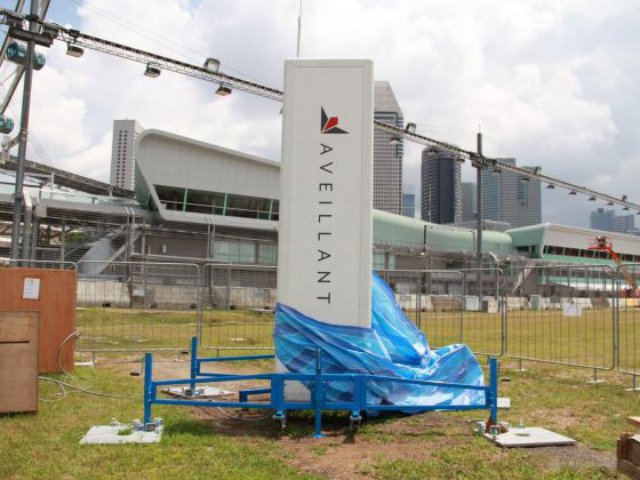The Republic of Singapore has acquired an advanced radar system which is able to detect and track even small consumer drones within a radius of 5km. The Gamekeeper radar, a counter-drone detection system, has been installed near the Singapore Flyer.
Made by radar technology company Aveillant Ltd, the system was sold in February to ST Electronics (Satcom & Sensor Systems).
According to Aveillant’s website, Singapore is the “second installation in (a) major urban environment”, after Monaco. France’s Charles de Gaulle Airport is the third location to have installed the system.
The Gamekeeper system is designed to detect, track and classify targets the size of a small consumer drone — with a cross-section as small as 100 cm sq — in 3D and has a range of up to 5km.
Unlike a traditional radar system that scans an area, the Gamekeeper continuously “floodlights” a volume of space, gathering 3D positions and motion information of every object detected, according to a statement on Aveillant’s website.
A computer, through complex algorithms, will then distinguish targets of interest from the “background clutter” and classify them either as Unmanned Air Systems or other targets, such as birds.
Local drone enthusiasts have shared news of the radar system on social media. A user known as Teo SoonHaur shared a picture on July 17, from another drone user known as Mervyn Soon.
ST Electronics declined to comment when approached by TODAY.
Aveillant, however, confirmed it had struck a deal in Singapore with ST Electronics in February this year.
Permits are required to fly unmanned systems that weigh more than 7kg. Users of lighter drones must seek approval to operate them for business purposes or within restricted zones.
For this year’s National Day Parade, a temporary restricted area has been established around the Marina Bay Floating Platform and its surrounding areas.
This is to “ensure the safety of low-level aircraft rehearsing for and participating in the aerial flypast for National Day Parade 2017”, parade organisers said.
Last year, the Formula 1 Singapore Grand Prix established a similar temporary restricted area to prevent unauthorised flying of unmanned aircraft like drones and other aerial activities. This was to allow low-level helicopter flights for aerial broadcast.
Anyone found to be carrying out unauthorised aerial activities in a temporary restricted area can be fined up to S$20,000 in the first instance.
In subsequent instances, they may be fined up to S$40,000 and/or jailed for up to 15 months, according to advisories issued.
Photo: Esther Leong/TODAY
Source: Today

